In the streets of Berlin
- Bernd
- Aug 2
- 12 min read
Updated: Sep 16
Instructions for use
You have to say goodbye to some of your life's dreams.
Otherwise, they will destroy you.
I've been traveling to the city for over 40 years and have lived there part-time for a few years now. My father came from Bagenz, near Cottbus. So, part of my roots lie here. I love this bustling city and have more than just a suitcase left in Berlin.
2025
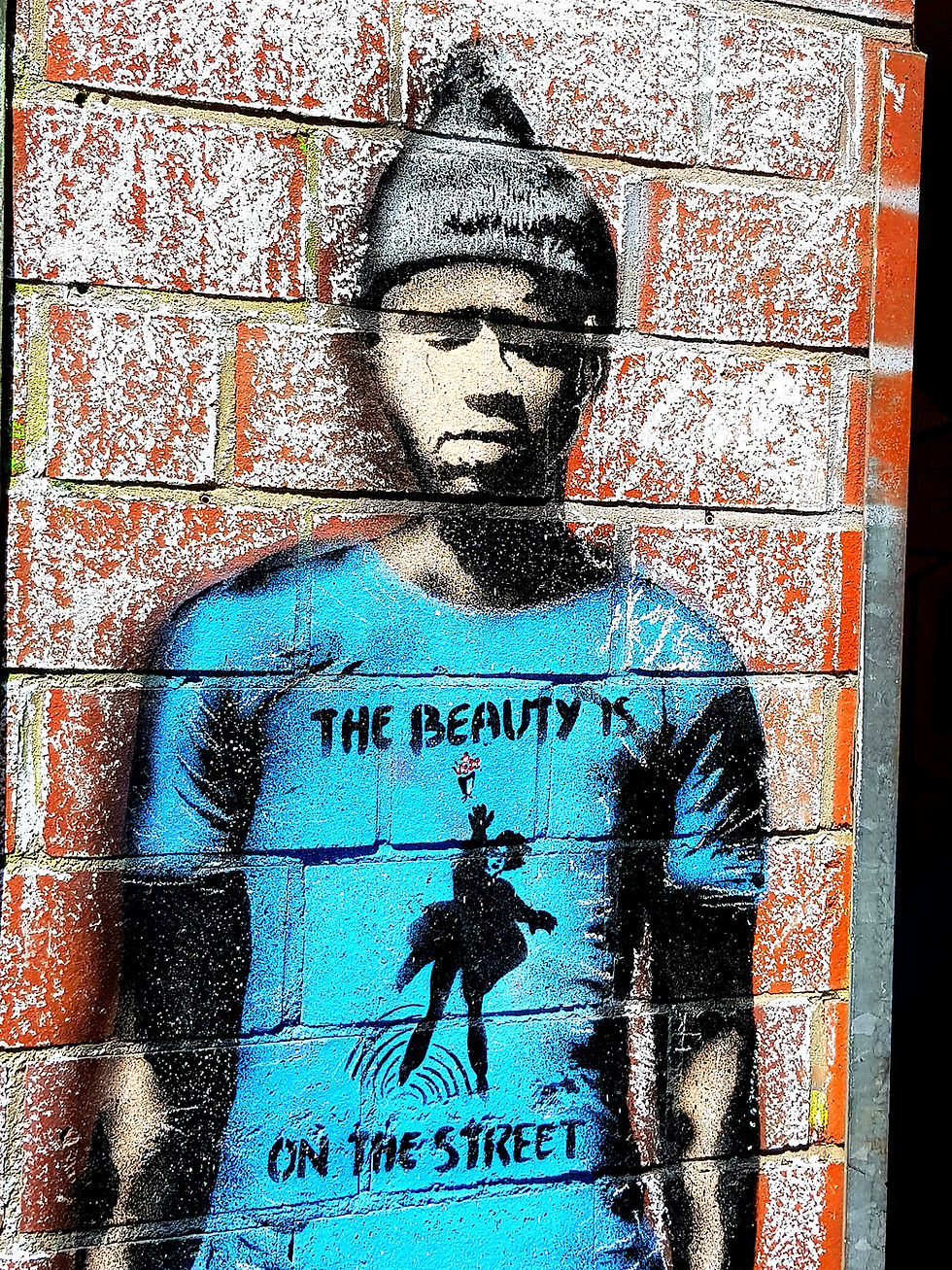
Nordkorea is in Berlin
I remember the city from the Cold War era. Berlin was like a sandwich without butter: A wall divided the city into West Berlin and East Berlin. The action was in the West, but the best stories came from the East. I walked around Alexanderplatz with my grandma and tried to spend my Ostmark, the currency of the GDR, which was quite difficult. Many of the goods weren't allowed to be exported to the West.

Later, I came to West Berlin in my own car to visit friends. West Berlin was a dazzling island of bliss, a neon-bright showcase of capitalism, surrounded by communist no-man's-land.
I stared over the Wall at the Brandenburg Gate, which belonged to East Berlin, and saw grim-looking border guards of the People's Army. They also shot at fleeing compatriots who were not at all convinced of the luxurious life under a communist regime.

This era shaped me. Communism and socialism remain a political fairytale to this day, nice to look at, but no one wants to live in it. We shouldn't repeat old mistakes.
However, since the Vietnam War, I have also had certain doubts about uncontrolled capitalism; it is no less inhumane.
Germany, the motherland of the social market economy, has found a good solution.
Unfortunately, it makes people lazy and the state more and more incapable of taking action because people - parked in their cozy corner of bureaucracy and regulations - hold the state responsible for their well-being and like to socialize personal problems.
Why do I say that? I say it because it's important for you as a tourist: We Germans love the ideal world. A people who once unsuccessfully traveled the earth in tanks during two world wars, since the end of World War II we have concentrated on what we are truly capable of: writing and thinking.
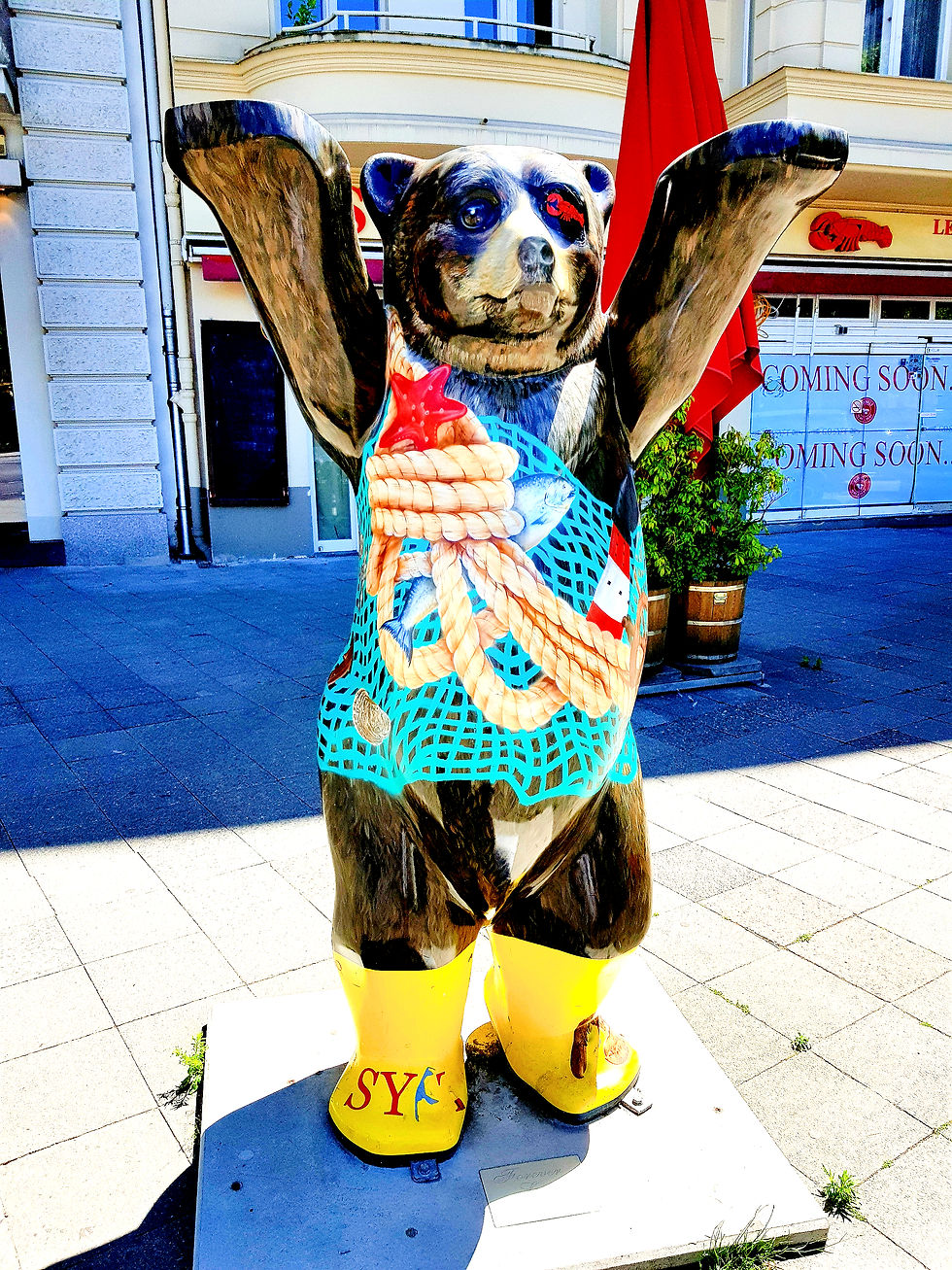
Although, in these times of global stupidity caused by TikTok, our thinking skills aren't in great shape either. Or has thumb scrolling become an Olympic sport?
We in Germany have the language police and do-gooders, the SPD, the Left Party, and the Greens. And Berlin is the center of language censorship.
So, if you come to Berlin, please don't come unprepared, so as not to fall into the numerous pitfalls. Germans love order and strict rules. I'll list the extent of our current state of mind for you:
Please do not wake me up!
Berlin is a melting pot of cultures, languages, and religions. You might be surprised by the occasional political demonstration by its residents. We have freedom of demonstration in Germany, which some people exploit for less liberal political and religious content. We're more or less the world champions of demonstrations. So let me give you a briefing for your visit.

Many well-off people live in Berlin's Mitte district, the spotless and overpriced area around the government district. In the last election, the overwhelming majority voted for the Green Party, the Left Party, and the SPD.
The likelihood of meeting one of these people is very high. These people, with the best of intentions, want to see life better for everyone—the world over, including you! They indulge in nostalgia and dream of a beautiful world with clear moral principles. Meaning, everyone is welcome.
I also call this population group the Morally Superior (MS).
So, if you arrive in Berlin as a tourist, you must not, under any circumstances, awaken the Morally Superior (MS)! Let them continue to save this world in their comfort zone, enjoying a latte macchiato at their favorite Italian restaurant. They have a clear and at the same time nebulous worldview:
Whites are essentially genetically racists, Blacks, by birthright, victims and the better people, but men, regardless of skin color, are potential rapists. Knife-wielding asylum seekers, often with an Islamist background, are of course allowed to deal drugs in parks; in the eyes of the MTs, they are a minority worthy of protection. They don't do anything. They just want to play.

This minority likes to flood our legal system with objections, is very whiny and grateful for all social benefits and free medical care, reproduces in the name of a higher power, and floods kindergartens and schools with their numerous offspring.
These offspring like to dictate religious worldviews to others in schoolyards and give tutoring on dress code, especially to girls.
Don't be surprised if, as a tourist, you have to watch police officers and rescue workers being insulted and Islamist clan families making deals with judges.
"Anyone who abuses a country's hospitality, commits crimes, fraudulently obtains benefits, and disregards our values in Canada has no place in this country and must leave. Anything else is beyond the capabilities of the righteous!" said a wise and astonished Canadian African-American teacher I met in a burger joint in 2016, who was astonished by the unchecked influx of migrants to Germany who didn't even have to show identification upon arrival.
But there is one thing you absolutely must not do as a tourist, as this could result in a prison sentence: fare dodging, i.e. using public transport without a ticket. Speaking of fare dodging: that brings us to
You must not say neger!
The historically charged word "Neger" (Negro) sneaked into Germany in the 17th century. In French, "négre" and Spanish, "negro," it means "black." The Latin "niger" means black, blackish, dark-colored.

Due to slavery, colonialism, and racial segregation, the word "Negro" is now perceived as derogatory and discriminatory. It's no longer spoken, let alone written. It's quite possible I'm committing a crime right now. Yes, that's how we Germans are.

Neger is therefore replaced by the cryptic N-word. So when you read or hear the N-word, it stands for Negro and not for nostalgia or nougat bread.
When Germans refer to a Negro today, they say "Black African," "Afro-German," or "African American." We want to present ourselves to the outside world with integrity at all costs. That's why, for example, even streets and squares containing the word "Negro" or "Moor," such as Mohrenstraße, are being renamed.
I don't know what Mohrenstraße is called today. Maybe Möhrenstraße?
However, the cryptic N-word says nothing about the true attitude of the people who use it.
We Germans are increasingly becoming word acrobats. Incidentally, the word "Indianer" is also frowned upon. That's not what people say anymore.
All this is reminiscent of the Swiss writer Peter Bichsel (*24.03.1935 - +15.03.2025), who impressively illustrates the meaning and purpose of language in his short story "A table is a table".
The legendary German culture of remembrance

Berlin is home to over 12,000 monuments and over 175 museums, representing the extremely rich and multifaceted culture and history of the German people.
If you arrive in Berlin as a tourist and find yourself casually discussing National Socialism with Germans, I have an important tip, especially for those of Arab descent: Hitler was not a great leader. Forget that.
Hitler was a racist and pathological mass murderer. He is no longer alive, meaning he has since died, which the vast majority of Germans welcome.
During the Holocaust (1933-1945), the Nazis murdered 6 to 11 million Jews, political opponents, Sinti, Roma, homosexuals, and people with disabilities. The largest memorial in Berlin is the Memorial to the Murdered Jews of Europe, also known as the Holocaust Memorial. This moral trauma explains our fundamental pacifist approach and why we Germans find it difficult to turn away people in need.

Unfortunately, the MS never tire of constantly making us, the Germans, feel guilty. In backward-looking, double-tongued Sunday speeches, they glaze over their eyes as they invoke our eternal guilt.
I see things differently (now). The victims of National Socialism are a reminder of what people – not just Germans – are capable of. Keywords: Cultural Revolution in China, Vietnam War, Iraq War, Israel's war crimes in Gaza, Russia's war crimes in Ukraine, Iranian terrorism, genocide in Rwanda...
Please don't just look back, but rather ensure that such a human tragedy never happens again. In doing so, we will honor the memory of all victims of National Socialism in a credible way.
Anne Frank is now called Fatima

According to this logic, the government and people of Israel also have a responsibility and do not absolve them of the atrocities against the Palestinian people. Anne Frank is now called Fatima. What is happening in Gaza, in Ukraine, in Tibet is a crime that the civilized world, based on the UN human rights conventions, cannot tolerate.
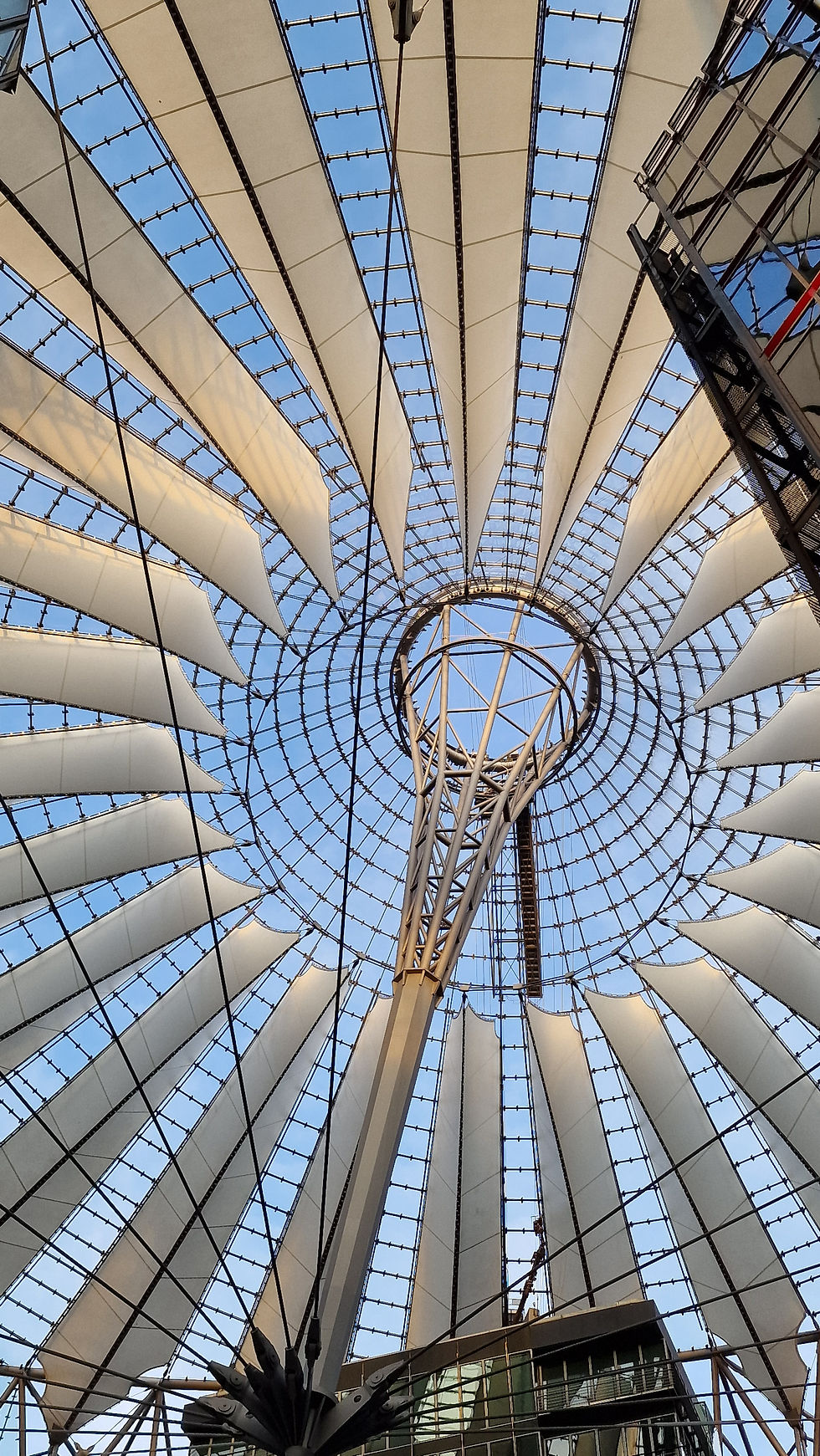
In the 21st century, it shouldn't really matter what color your skin is, what religion you have, what nationality you belong to, or who you love. But that still doesn't seem to have sunk in among people.
And when I look at the elderly mullahs in Iran, I wonder whether they are still capable of doing business or are of sound mind, given their contempt for their own people and the state terrorism they are inflicting on other countries.
In this context, here is a hint for the ultra-religious in Berlin and around the world: 72 virgins as a reward for a bomb attack in paradise is, when calculated over eternity, a vanishingly small number.
Lord, let it rain brains!
The UN would be a key to greater justice. But the Security Council is home to precisely those corrupt forces that are responsible for many of the world's problems.
But back to the topic of Berlin.
I dare to make the bold claim that no nation has paid more for the atrocities of the last two world wars than the Germans: through territorial cessions, a policy of humility, monetary compensation, and requests for forgiveness. We take a stand; the memorials are an expression of this. Berlin stands against forgetting like perhaps no other city in Europe.
Crime
Of the 163 countries in the Global Peace Index, Germany ranks 20th. See also
Who would have thought that crime rates would be highest in the government district, Berlin Mitte, and Tiergarten? Does this refer to corruption?
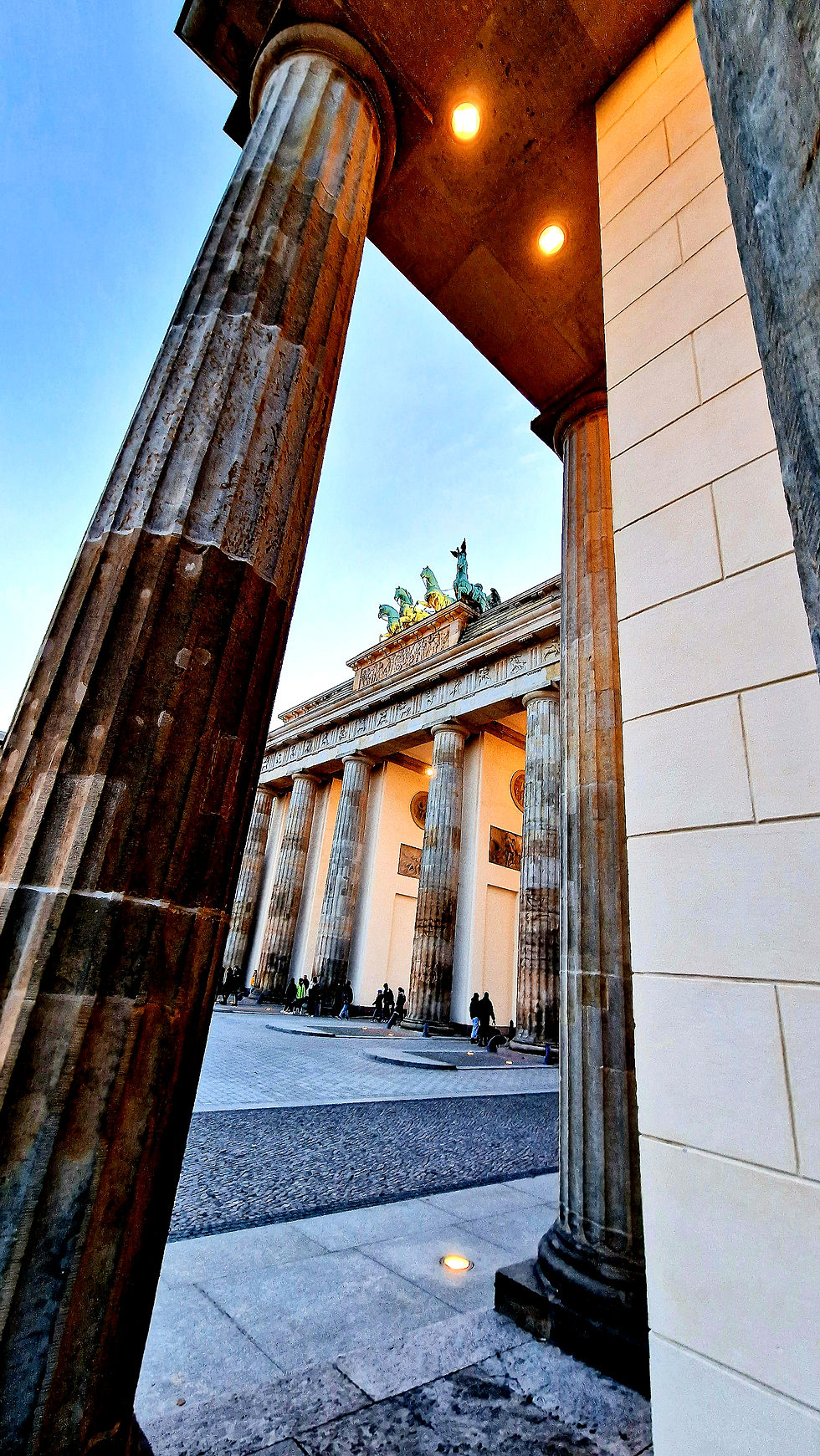
A student told me in an Arabic café that he would like to emigrate to Canada. Germany is out of the question for him, as it is too unsafe there.
He said he had heard that police officers were being spat on and shot at with pyrotechnics.
Now, Germany, and Berlin, are still relatively safe. Nevertheless, especially abroad, the impression arises that criminals receive more consideration than the victims they harm.
Citizens who travel without a ticket end up in jail faster than a crazy asylum seeker with multiple identities.
They're dealing drugs in Görlitzer Park. The Berlin Senate has stood by for years, doing nothing. The police are sidelined and exposed by a sluggish justice system.
German social gigantism

I've spent over 40 years in social work. Looking back, it's clear: the welfare state has continued to expand.
Social work is largely inefficient because it focuses one-sidedly on the rights of benefit recipients, who are increasingly brazenly exploiting the welfare state. People tend to ignore their responsibilities.
When MS in numerous talk shows report that nothing reaches the poorest of the poor, I cannot confirm this from my work as a social worker.
Social benefits, whatever they were called, are called, or will be called, are there to ensure a minimum standard of living. In my professional experience, none of them reach the poorest children because their less educated parents simply can't handle the money.
They invest it in artificial nails, spend it online, on alcohol, sometimes on drugs, and fast food. They are unable to provide for their children emotionally and materially. I think I'm opening a can of worms.

The Paritätische Welfare Association (Paritätische Wohlfahrtsverband) self-righteously protects the sprawling welfare state. Its aim is to perpetuate the myth that the poorest of the poor suffer and are disadvantaged. Under its protection, a gigantic (non-profit) welfare industry has established itself in Germany, which (mostly) pays no taxes.

I would be in favor of social industry officials completing an eight-week internship annually in Nairobi, Manila, or Berlin-Neukölln.
Or at least work with family helpers from a reputable organization within the families and not spout social buzzwords in cozy consulting offices.
In the eyes of the social industry, it is never enough; it is always about more justice.
The state should regulate everything possible, which it is also willing to do, in order to keep people calm.
I made an interesting observation: the more you take away people's personal responsibility, the more lazy they become.
In this respect, I can – based on my professional experience – classify the following situation that I was able to observe in Berlin Schöneberg:

A young woman ran through the street, cursing loudly.
In a fit of rage, hatred, and everything else, she kicked a parked e-scooter, screaming loudly and gesticulating wildly, causing it to crash to the ground. She continued to kick violently.
Two meters away from her, a man from the public order office was casually handing out parking tickets.
Why the churches, the internet giants that generate billions in revenue in Germany, don't pay taxes is a mystery to me. Their hypocritical charity events are pure rubbish. You have to say goodbye to some of your life's dreams. Otherwise, they will destroy you.
Berlin, city of a thousand possibilities
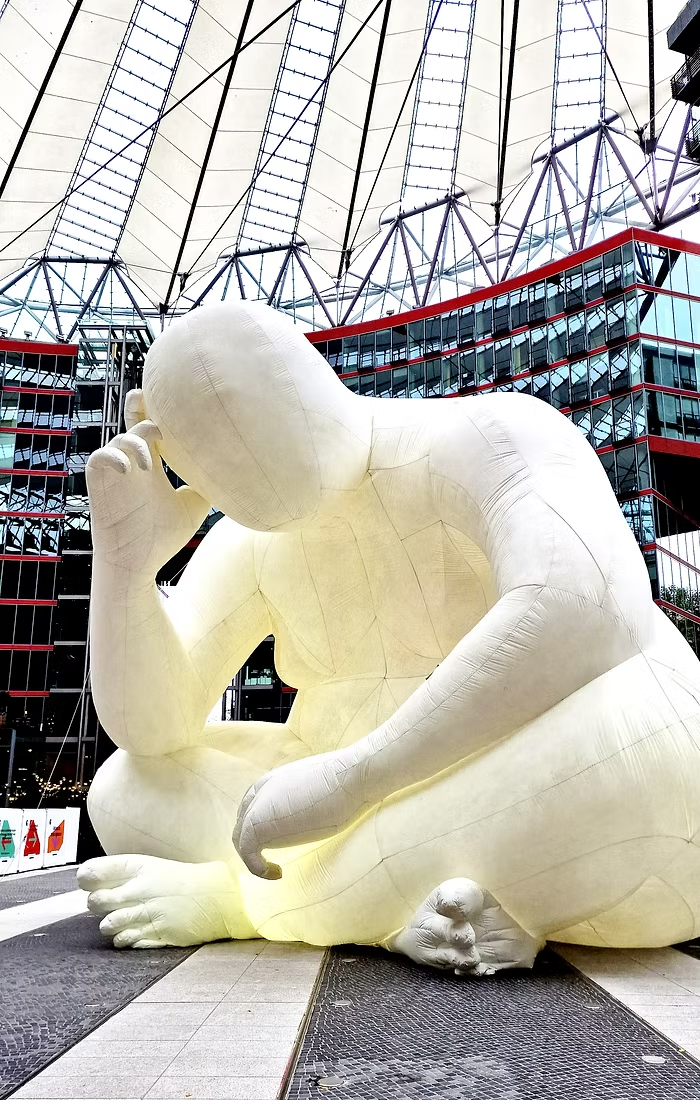
The best time to visit Berlin is late spring, summer, and late summer. It's pleasantly warm then, and street cafés and restaurants everywhere invite you to sit outside.
The streets are bustling with life, with countless street parties, street musicians, art festivals, and cultural programs in theaters and museums.
Berlin Mitte, Tiergarten, and the government district alone will keep you busy for a good week. At least.
But first we need to strengthen ourselves:
Berlin Currywurst
My rating: *
You can find it practically on every corner. Everyone offers it these days: the quick snack for in between meals, the cult German fast food, the currywurst. It consists of a sliced bratwurst or a red boiled sausage.

The aromatic sauce consists of tomato paste, ketchup, onions, spices, and, of course, curry. Today, countless vendors simply pour curry ketchup over the sausage. It is served with a bread roll or fries.
The sausage is now offered in numerous varieties, including poultry, beef, pork, and vegetarian.
Pergamon Museum
Bodestraße 1 - 3, 10178 Berlin
My rating: (*****)
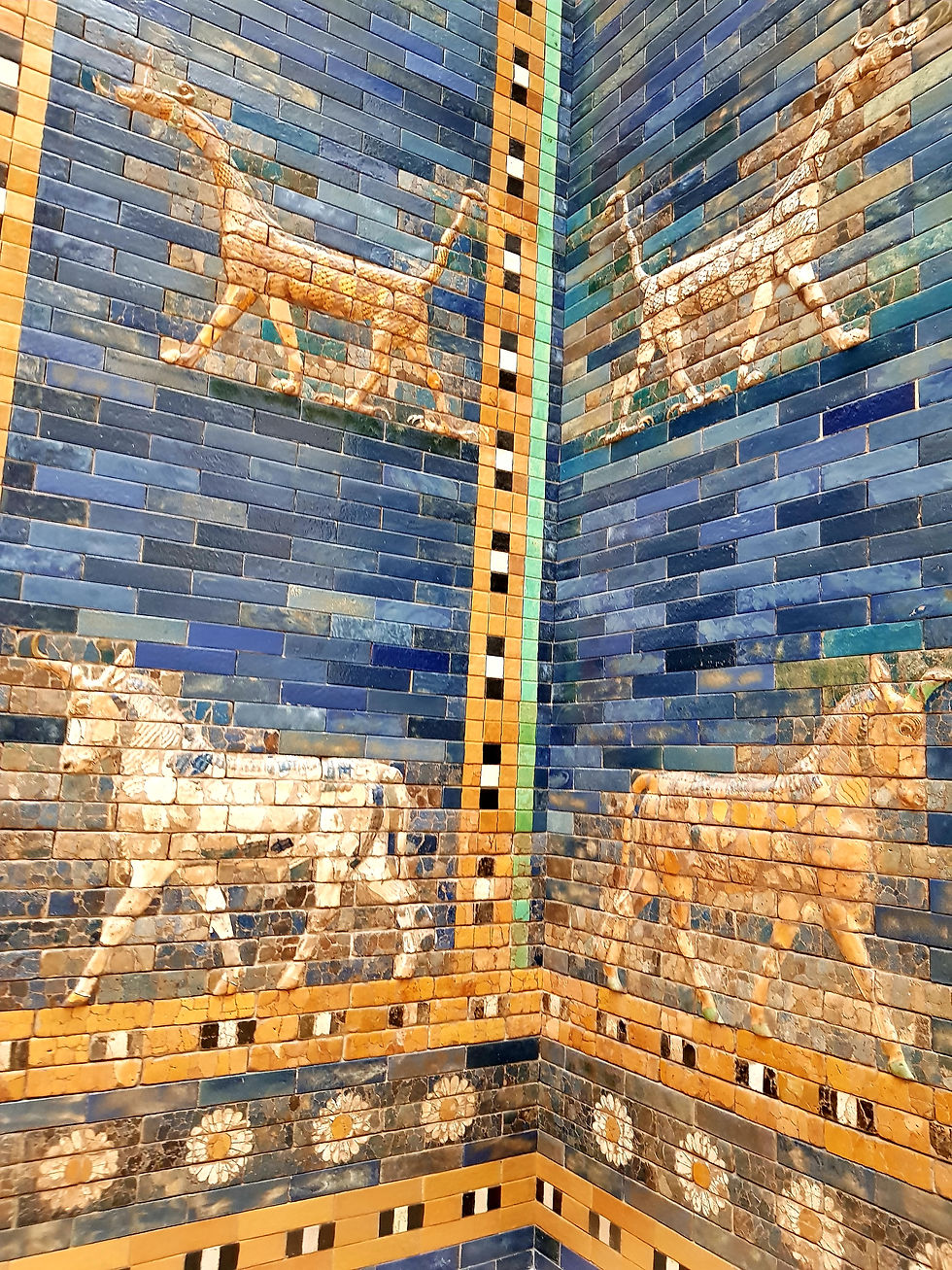
The Pergamon Museum is an absolute highlight. Unfortunately, it is currently closed for extensive renovations until 2027. The north and central wings are scheduled to reopen in spring 2027. The museum's full opening is planned for 2037!
Pergamonmuseum. Das Panorama
Am Kupfergraben 2, 10117 Berlin

My rating: *****
Based on a concept by Yadegar Asisi, it depicts the city of Pergamon around 129 AD in a 360-degree panorama.
It depicts everyday life in this city during a 24-hour cycle with countless details and scenes. Sound and light effects immerse you in ancient life.
German Spy Museum
Leipziger Platz 9, 10117 Berlin
My rating: ****

In this multimedia museum, you'll immerse yourself in the world of espionage and spies. The exhibition features clever exhibits, some of which you can even try out yourself, solve puzzles, or experiment with. The ingenuity of nations is seemingly limitless. Let yourself be inspired.
Berliner Dom
Am Lustgarten, 10178 Berlin
My rating: *****
Kaiser Wilhelm II commissioned the neo-Renaissance Berlin Cathedral in 1894. The cathedral is a Protestant church. Construction was rapid, from 1894 to 1905. Today, such buildings take considerably longer.

In 20 seconds, the elevator takes you to the 100-meter-high observation deck. The building impresses with its monumental dome.
Organ concerts are still held here today. The cathedral is also the burial place of the Prussian kings.
Old Museum
Bodestr. 1 - 3, 10178 Berlin
My rating: *****
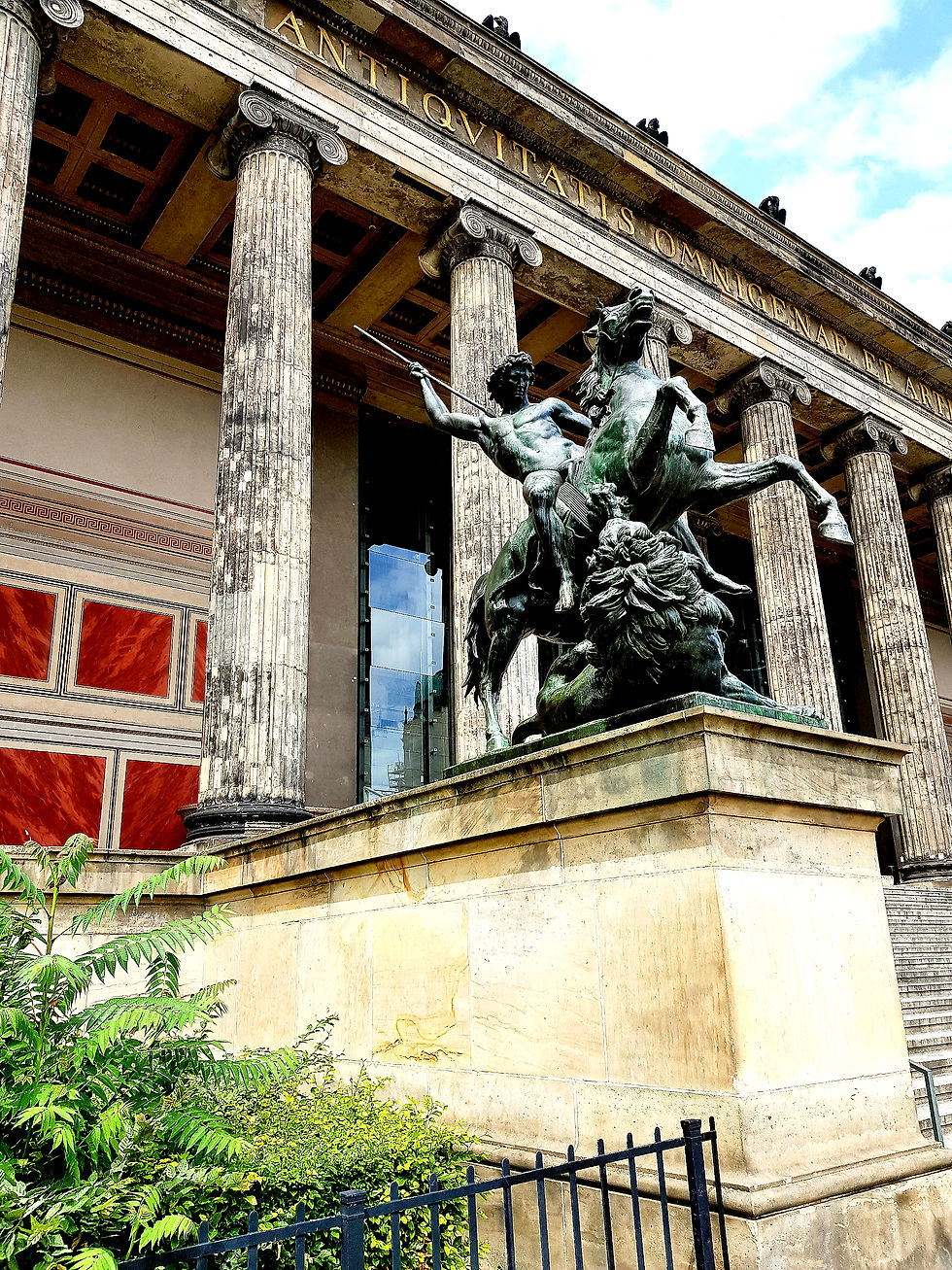
The UNESCO World Heritage-listed Altes Museum am Lustgarten is one of the numerous museums on Museum Island.
King Frederick William III commissioned the building in 1825. It is considered one of the masterpieces of German Classicism.
The museum presents works from classical antiquity, from the Greeks, Etruscans, and Romans: small art objects, vases, jewelry, and sculptures.
Tiergarten
District: Mitte
My rating: *****
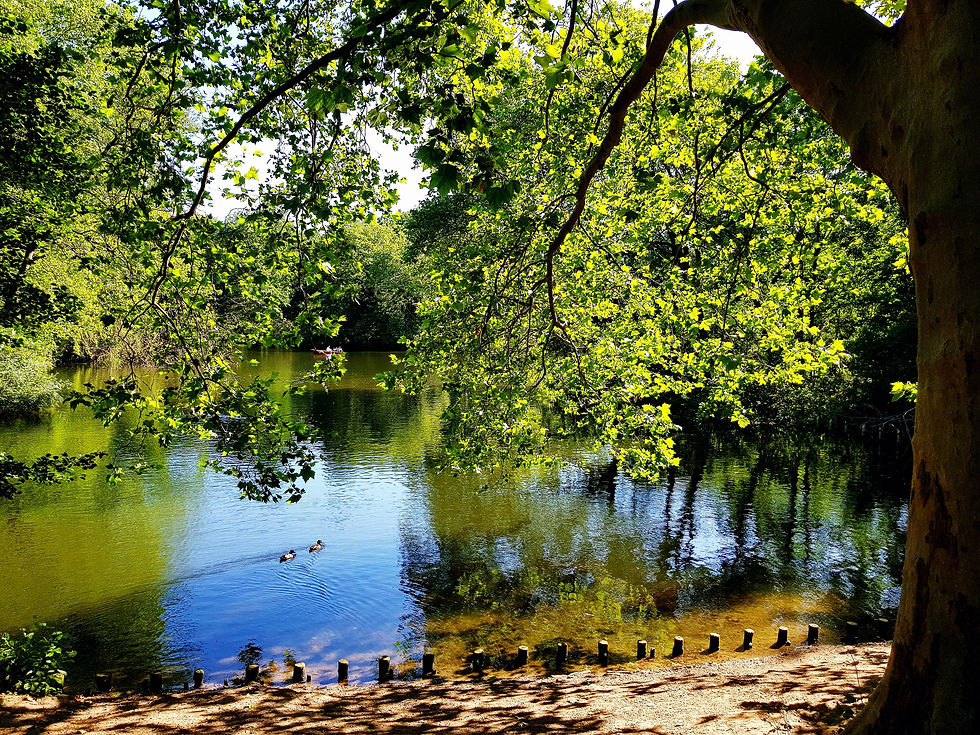
The Tiergarten district is known for its eponymous park. At 210 hectares, it's even larger than London's Hyde Park. Here, you can spend hours wandering around or picnicking on the numerous lawns: Tiergarten is Berlin's green lung.

The Tiergarten was created in the 16th century as a hunting ground for the nobility; in the 18th century, Friedrich II transformed the area into a baroque pleasure garden.
Today, you will find a number of attractions nearby: the Brandenburg Gate, the Reichstag, the government district, the Victory Column with the winged Victoria statue, Potsdamer Platz, the Berlin Philharmonic Hall, the Zoological Garden, the New National Gallery...
However, you should avoid the park at night.
Have fun exploring.
Neue Nationalgalerie
Potsdamer Str. 50, 10785 Berlin
Mondays closed
Tuesda - Sunday from 10 am - 6 pm, Thursday until 8 pm
My rating: ****
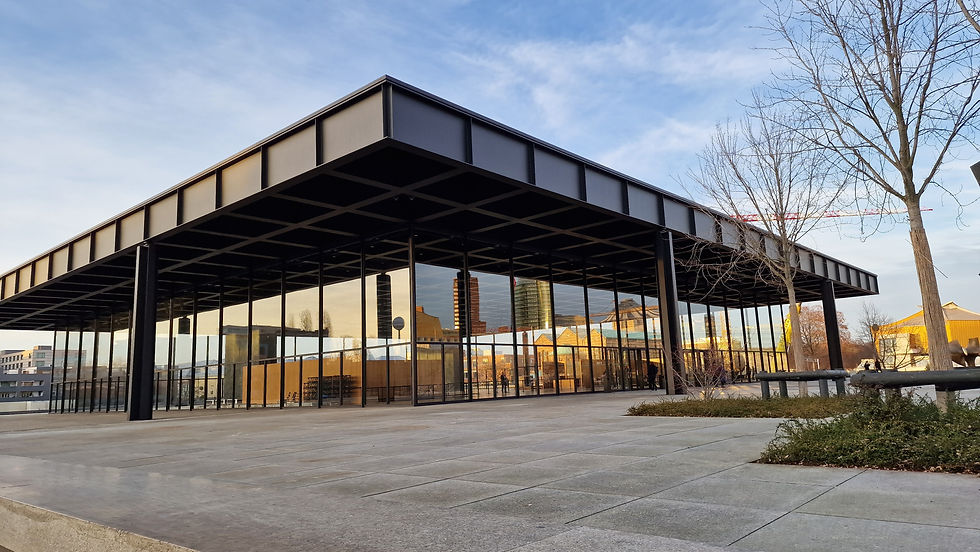
The Neue Nationalgalerie is a museum for 20th and 21st-century art. The building itself, built in 1968, is a work of art and considered an icon of classical modernism. The collection displays paintings and sculptures from classical modernism to the 1960s and beyond.
Living from the past
Germany has twice risen from the ruins with remarkable thoroughness. After both world wars, the postwar generation, and later the now much-maligned baby boomers, with an unwavering passion for garden gnomes, asparagus, and waste separation, rebuilt the country, kept it going, and earned respect from abroad for these achievements.
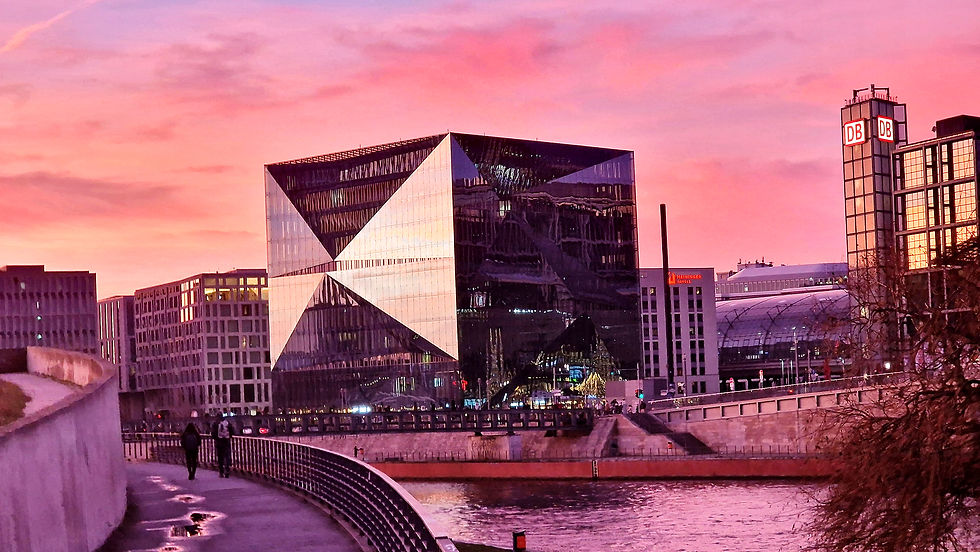
This wasn't without conflict: coming to terms with the Nazi past and the resulting conflicts between young and old, terrorism by the Red Army Faction, the peace movement, environmental and animal protection, to name just a few. And all this during the Cold War, energy crises, and mass unemployment.
Germany likes to present itself as a cosmopolitan country. The people here appear as warm-hearted as a November day in Hamburg: a touch grumpy, but behind it beats a good heart.
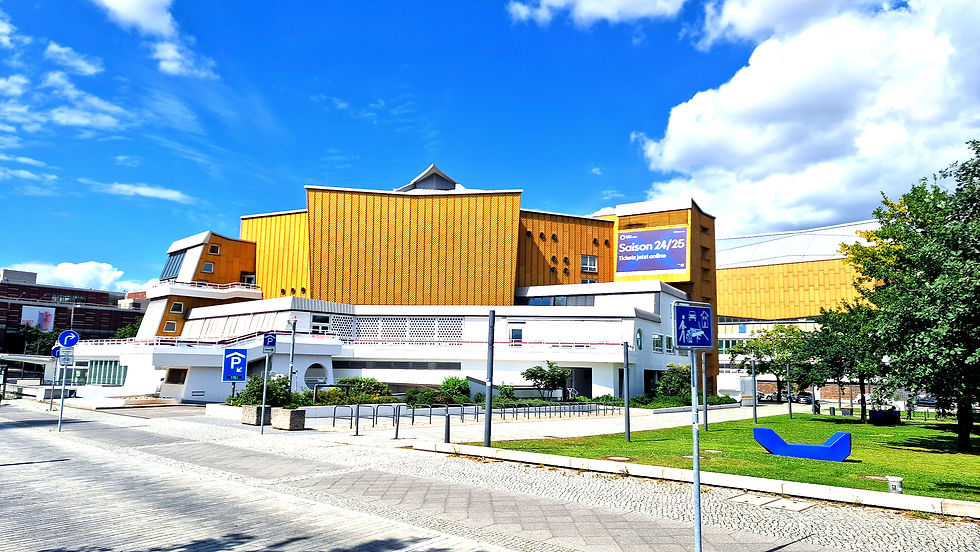
The German fear of international conflicts, of the climate crisis, terrorism, the army of migrants and the increasing Wild West mentality of some states is straining at our love of order in a rule-based world.
No city symbolizes this turmoil better than Berlin. Visit this city!
I still have a suitcase in Berlin...
Song: Marlene Dietrich and Hildegard Knef made the song popular
Music: Ralph Maria Siegel
Lyrics: Aldo von Pinelli
"I still have a suitcase in Berlin.
That's why I have to go back there soon.
The bliss of times gone by.
They're all still in my little suitcase..."
If you want to hear the song:





Comments